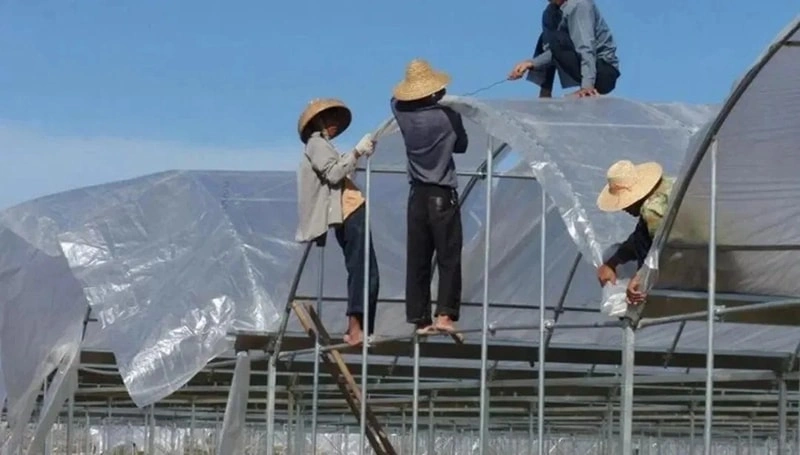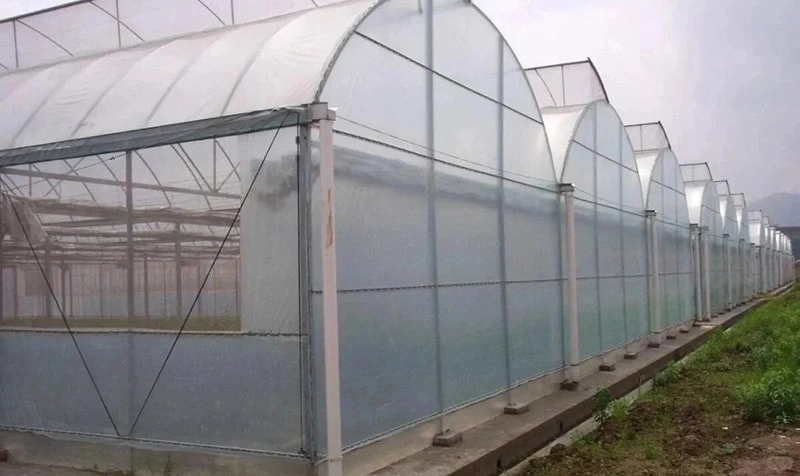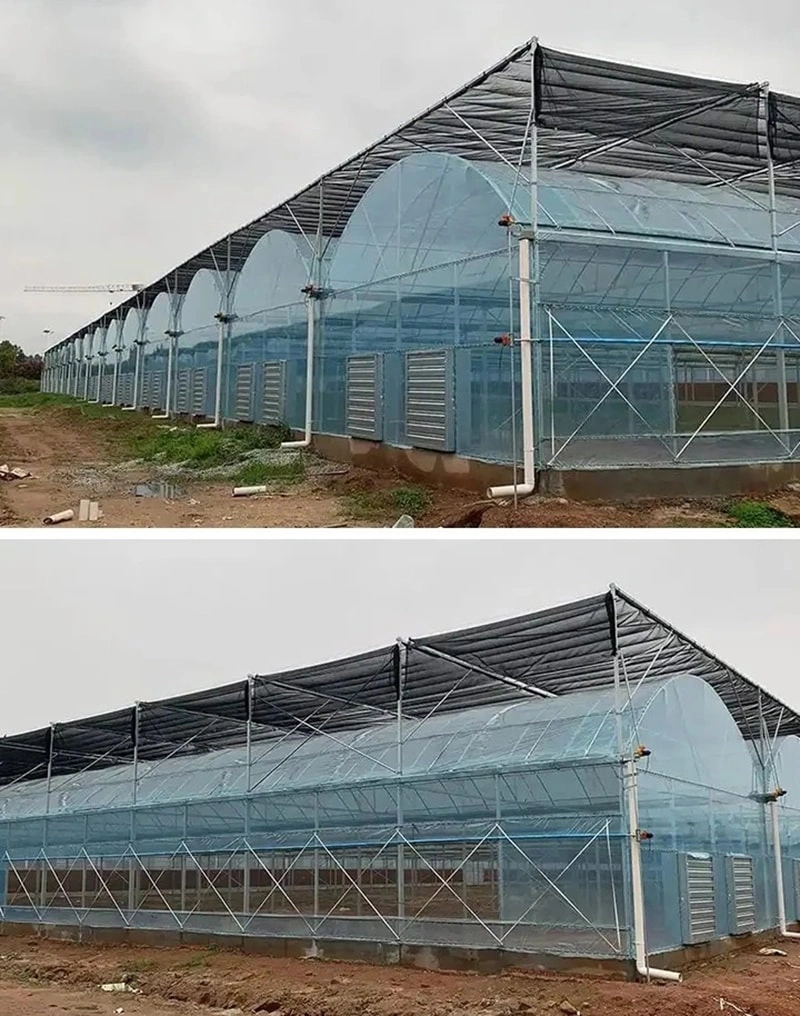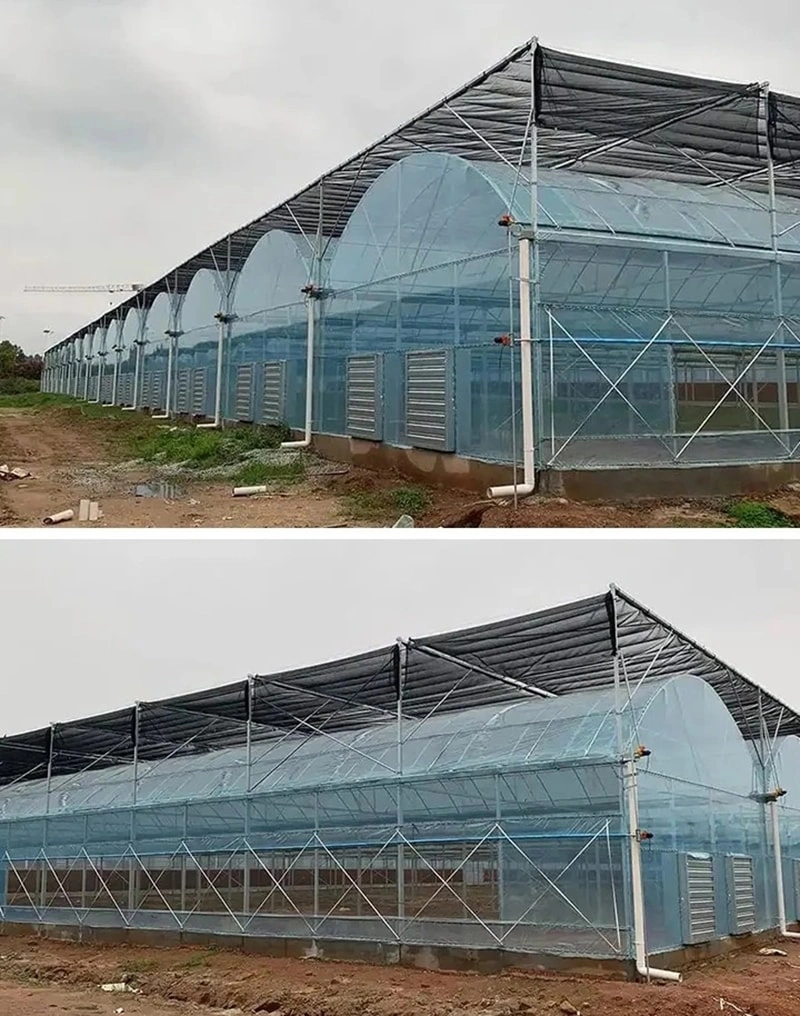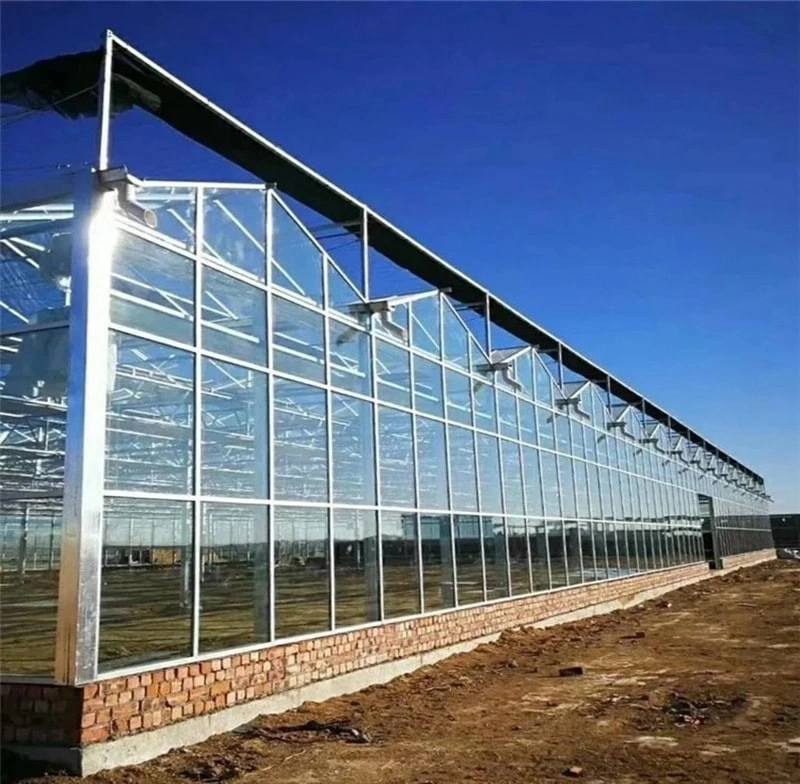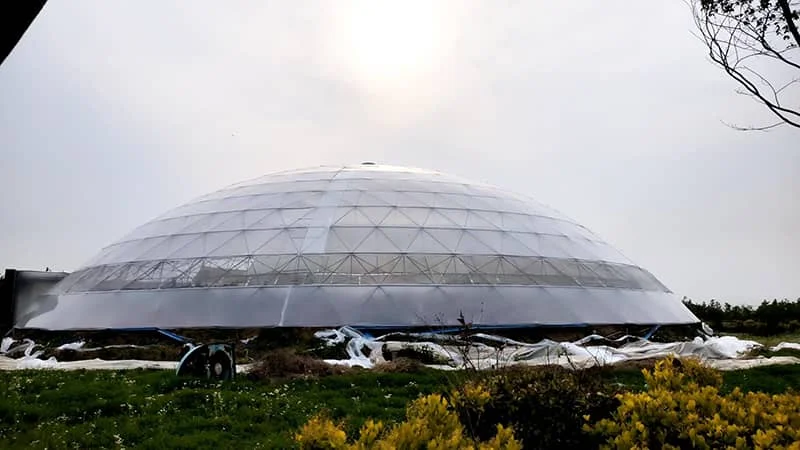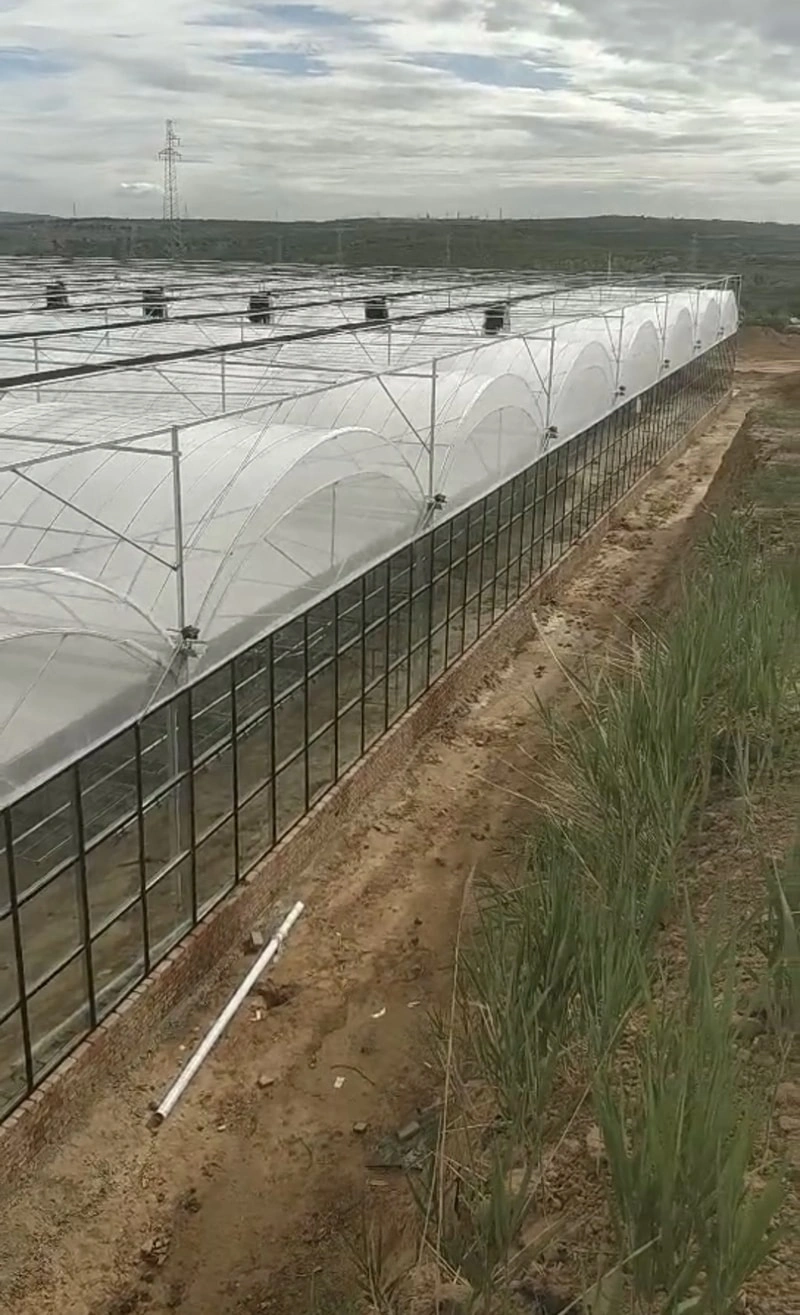Venlo greenhouse originated in the Netherlands in the 1950s and has since become the most widely copied glass-house concept on earth
Venlo greenhouse originated in the Netherlands in the 1950s and has since become the most widely copied glass-house concept on earth. Its signature element is a series of small, 3.2 m or 4.0 m wide roof bays, each carrying 2–4 symmetric glass panes that hinge open independently. This “multiple-small-span” idea delivers four core advantages that still define modern Venlo-type structures:

1. Maximum daylight
Narrow aluminum profiles and a roof pitch of 22–26° give > 90 % light transmission—critical for northern latitudes with weak winter sun.
2. Low structural shading
Because every bay has its own short gutter (aluminum, 60 mm wide), there is no large truss directly under the glass, so crops receive uniform PAR from sunrise to sunset.
3. Modular, stackable bays
Growers can start with 1 ha and add extra 3.2 m bays without changing gutter height or service lines; steel, vents and screens are 100 % repetitive, keeping expansion cost close to new-build cost.
4. Roof-vent aerodynamics
Each bay opens two vents at ridge level, creating a chimney effect that achieves 15–20 air changes per hour without side vents—ideal for humid continental summers.
---
Typical product specification (industry-standard Venlo that most manufacturers now quote)
Framework
- Hot-dip galvanized steel columns, truss and purlins, S350GD+Z275, 25-year corrosion warranty.
- Bay width: 3.2 m, 4.0 m or 4.8 m (3.2 m most common for high-wires).
- Gutter spacing: 4.0 m or 5.0 m.
- Gutter height: 4.5 m – 7.5 m (standard 5.5 m for tomato, 6.5 m for rose).
- Roof pitch: 22° (northern climate) or 26° (snow belt).
- Design loads: snow 0.3–1.0 kN m-², wind 0.5–1.2 kN m-², crop 0.15 kN m-², service 0.5 kN m-².
Glazing
- 4 mm tempered float glass, 90 % direct transmittance, hail-tested EN 12150.
- Optional 4 + 9 + 4 mm low-E double glass (U 2.6) for ultra-cold regions.
- Aluminum bar cap with EPDM profile, 100 % watertight to 200 Pa.
Ventilation
- Continuous rack-and-pinion roof vents, 1.0 m or 1.25 m flap width, 19–25 % of floor area.
- A- or V-type vent configuration; servo 0.37 kW motor drives up to 48 flaps.
Climate options
- Twin-energy screen (thermal + blackout) on 2-level wire bed, push-pull 45 m max.
- High-pressure fog, pad-fan or wet-pad with recirculation.
- Hot-water pipe rail 80/60 °C, 180 W m-²; optional overhead heating.
- CO₂ distribution via sleeve tube or flue-gas heat-exchanger.
Automation
- Climate computer with IoT sensors (RH, T, PAR, CO₂, WC, EC).
- Open API for Priva, Ridder, Siemens or custom farm software.
Logistics
- Fully knock-down kit, 1 ha packs into ± 3 × 40 ft HC containers.
- Erection rate: 700 – 1 000 m² per 6-person crew per day.
---
Where the Venlo concept works best
Cool-temperate & maritime zones
Netherlands, Belgium, UK, Denmark, Germany, Poland, Baltic states, coastal British Columbia, Pacific North-West USA, southern Chile, Tasmania, New Zealand—regions with mild summers, moderate snow and high natural light that profit from maximum transparency.
Continental steppe & prairie
Ukraine, Russia (Krasnodar), Kazakhstan, northern China, Alberta, Kansas, South Australia. Here the high vent ratio and optional 1 kN snow package handle hot, dry summers and sudden cold fronts.
Mediterranean & semi-arid winter production
Spain (Almería, Murcia), Italy (Sicily), Greece, Turkey, Morocco, California, Arizona, northern Mexico, Israel. Winter solar gain is maximized while ridge vents evacuate humid winter air that causes fungal disease.
High-altitude tropics
Kenya (Naivasha), Ethiopia, Colombia (Bogotá plateau), Vietnam (Da Lat). Cool nights (8–12 °C) make heating unnecessary; the narrow-gutter design resists hail and allows rapid rain-runoff.
Gulf & Middle-East summer vegetable re-location
Saudi Arabia, UAE, Oman, Kuwait. Double glass + external shading + pad-fan converts Venlo into an energy-efficient desert greenhouse that still uses the same repetitive spare-part logic.
In short, any country between 25 ° and 60 ° latitude—where high light, modular expansion, and precision climate control are valued—will find the Venlo-type greenhouse the most proven, service-friendly and logistically simple glass-house solution on the market.








